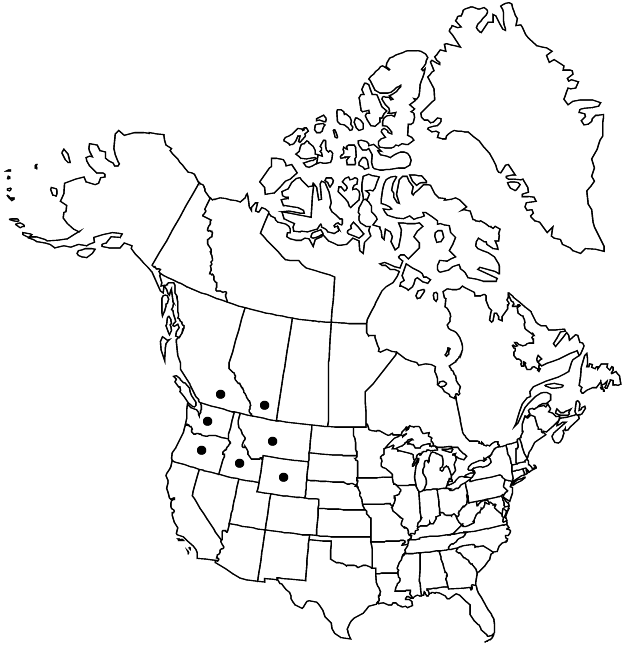Eriogonum flavum var. piperi
Contr. W. Bot. 11: 7. 1903.
Plants loose to compact mats, 1–6 dm wide. Aerial flowering-stems mostly erect, (0.5–) 1–2 (–3) dm. Leaf-blades linear-oblanceolate to oblong or narrowly elliptic, 2–7 (–9) × 0.3–0.8 (–1) cm, densely tomentose abaxially, tomentose to floccose or glabrous and greenish adaxially. Inflorescences subcapitate to umbellate; branches 0.2–1 cm. Involucres usually turbinate, 4–9 mm. Flowers (4–) 5–7 mm, including 1–1.5 mm stipelike base; perianth pale to bright-yellow. 2n = 76, 80.
Phenology: Flowering Jun–Sep.
Habitat: Sandy to gravelly flats and slopes in mixed grassland and sagebrush communities, and in montane to subalpine conifer woodlands
Elevation: (700-)1200-2800(-3200) m
Distribution

Alta., B.C., Idaho, Mont., Oreg., Wash., Wyo.
Discussion
Variety piperi is the common and widespread phase of the species, found mainly west of the Continental Divide in southern Alberta, southern British Columbia, eastern Washington, northern Idaho, and western Montana south into northeastern Oregon and northwestern Wyoming. It is only slightly variable, the major exception being depauperate individuals at high elevations in harsh exposures; these have been recognized by some as var. polyphyllum. The length of the stipelike base shortens from west to east, but only rarely are individuals in Montana troublesome to place either here or in var. flavum. The plants do well in cultivation and are now widely available.
Selected References
None.
Lower Taxa
"dm" is not declared as a valid unit of measurement for this property."dm" is not declared as a valid unit of measurement for this property."dm" is not declared as a valid unit of measurement for this property."dm" is not declared as a valid unit of measurement for this property."dm" is not declared as a valid unit of measurement for this property."dm" is not declared as a valid unit of measurement for this property."dm" is not declared as a valid unit of measurement for this property.